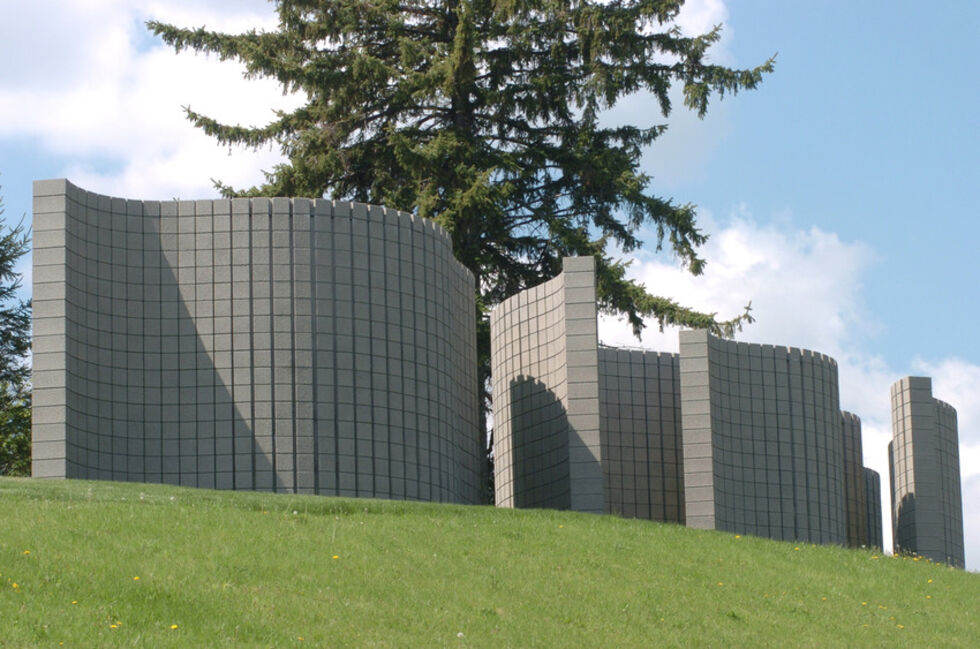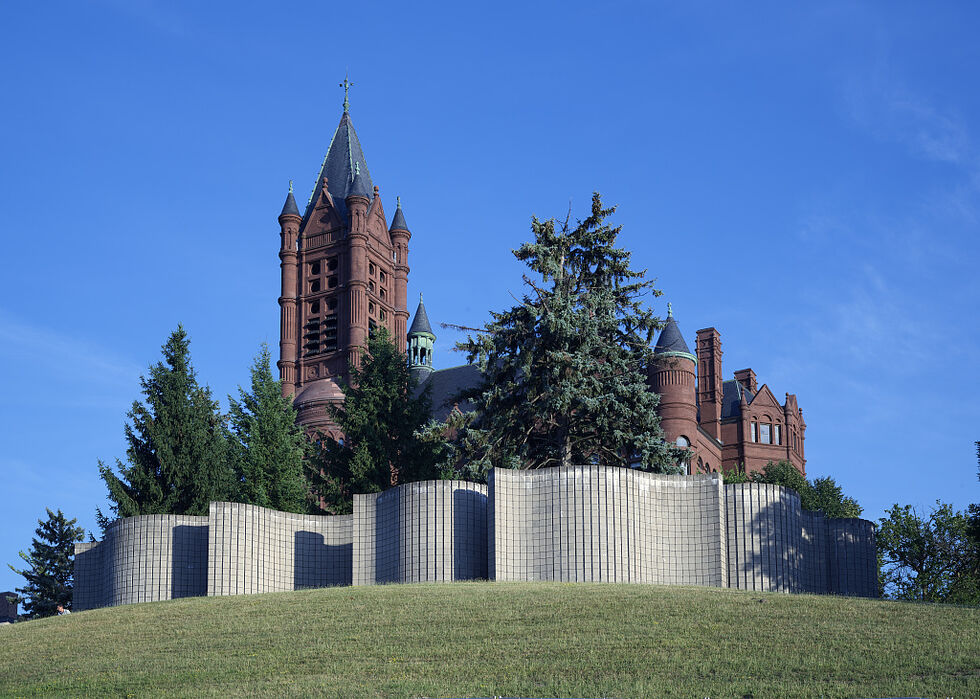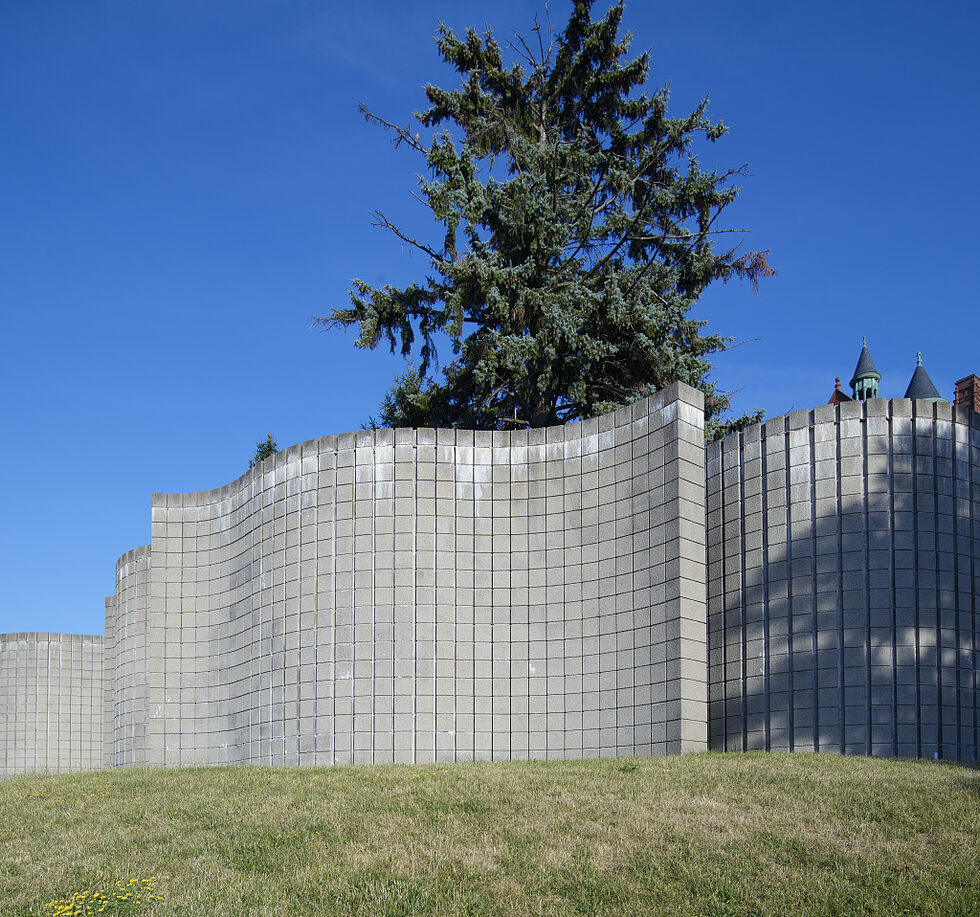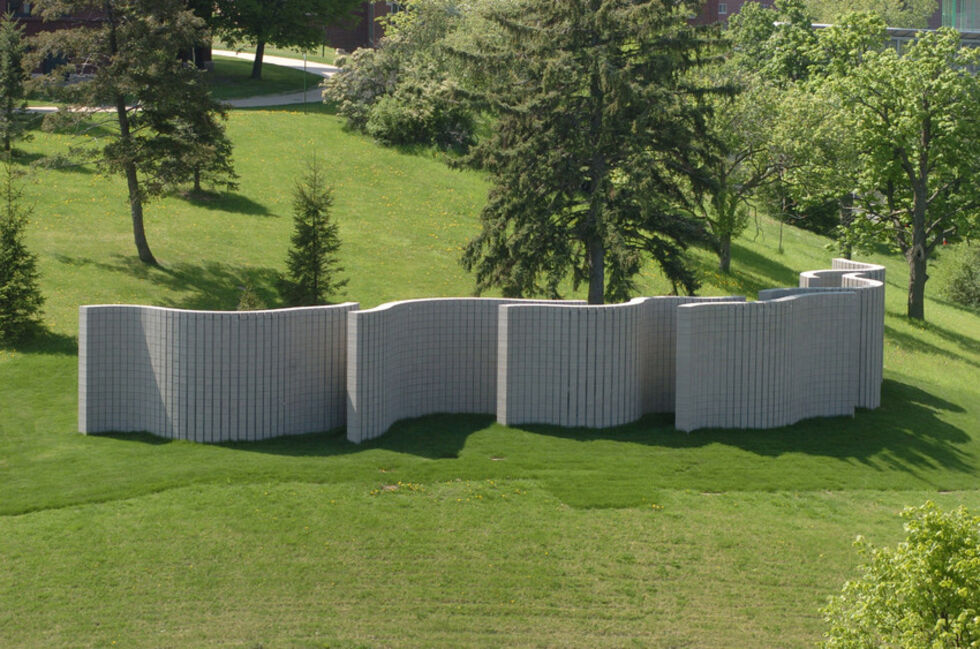Six Curved Walls
"Six Curved Walls" by Sol LeWitt , 2004
Six Curved Walls is a sculpture assemblage by American artist Sol LeWitt. The assemblage consists of six undulating concrete walls. Each wall stands 12 feet high and the assemblage spans 140 feet on the hillside of Crouse College. Due to each wall’s undulating shape and close proximity to one another, the assemblage creates a series of unexpected openings and passageways to visitors to explore. The assemblage is meant to represent the breaking down of barriers between the university and the surrounding community.
Sol LeWitt donated the design for Six Curved Walls as a gift to mark the inauguration of Nancy Cantor as the 11th Chancellor of Syracuse University in 2004. The project was also supported by Robert Menschel and Richard Menschel. Based on her correspondence with LeWitt, Cantor invited LeWitt to create something that would “mark the possession of people through the campus and to link the symbolic centers of the campus.” Consistent with LeWitt’s other works, LeWitt was responsible for the design but turned over implementation to others. In this case, Syracuse University building and ground staff have been empowered as artistic co-creators of Six Curved Walls and are responsible for maintaining the work. From afar, the walls may appear harsh and restraining, however, closer inspection reveals that they are porous and have unexpected openings. Consistent with this experience, Cantor explained in her inaugural address that the walls “are meant for boundary crossing.”
Solomon "Sol" LeWitt was born September 8, 1928 into a Jewish family that immigrated from Russia. He earned his Bachelors of Fine Arts from Syracuse University in 1949. He is regarded as a pioneer in Conceptual Art and Minimalism. LeWitt worked in a variety of mediums including prints, drawings, sculptures (preferred to call them structures), and paintings. Upon receiving his degree he traveled to Europe to study Old Master paintings. He then served in the Korean War; upon returning he moved to New York City, around 1953. After moving to New York City, he studied at the School of Visual Arts while working as a designer for Seventeen magazine, where he did mechanicals, paste-ups and photostats. LeWitt secured a role, for one year, as a graphic designer for architect I.M. Pei. In 1960, LeWitt took an entry level job at the Museum of Modern Art (MoMA) in New York City. His coworkers included artists such as Dan Flavin, Robert Mangold, and Robert Ryman. LeWitt would eventually have his own solo exhibition at MoMA, eighteen years later. While working at MoMA, he began to explore an essentialist approach to art that focused on pattern, geometry, and repetition. LeWitt started to work on sculptures of various gridlike axial groupings of modular white aluminum, metal cubes, or wood. Then in 1968 he created an extensive series with over 1,000 examples of wall drawings. Lewitt would usually create sketches and instructions for his abstract works and then leave the implementation to his assistants and others. LeWitt was the subject of over five hundred solo exhibitions in museums and galleries worldwide since 1965 with a career spanning over four decades. He passed away on April 8, 2007.
SU Art Galleries; "Art on Campus - Six Curved Walls." SU Art Galleries; “Sol LeWitt, Six Curved Walls, Syracuse, 2004." LightWork Collection, courtesy of PaceWildenstein; Gruber, S. D. (2004, December 10). “At Syracuse University, Undulating Walls Commemorate Vanishing Barrier.” Forward.com; Blumberg, N. Wainwright, L. (2020, April 4) “Sol LeWitt.” Encyclopedia Britannica; Ulaby, N. (2007, April 9). “Sol LeWitt: Conceptual Art pioneer dies at 78.” NPR; SU Photo and Imaging Center; Library of Congress.






